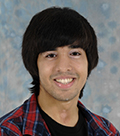

Reconstructing organ level liver functions by 3D printing.
PhD Supervisor(s): Jing Yang; Andrew Bennett; Morgan Alexander; Kevin Shakesheff.

A key challenge in drug candidate screening is the accurate determination of their human toxicity. Recent data from a group of major pharmaceutical companies has shown the fall of success rate steadily from 10% in 2002-2004 to 5% in 2006-2008 (Arrowsmith, 2012). In addition, nearly 3% of marketed drugs have been withdrawn due to adverse side effects (Wang et al., 2010). One of the underlying causes of failure in assessing toxicity in preclinical studies is the unreliable extrapolation of toxicity from two dimensional (2D) cell-based assays and animal models to human. There is a clear imperative for developing a three dimensional (3D) human liver model with greater reliability and predictability in identifying toxicity-free drugs.
Bioprinted human liver models can be used to bridge the gap between preclinical testing and clinical trials to reduce attrition rate at expensive clinical stages. There is a $7 billion preclinical research service market as pharmaceutical and biotechnology companies increasingly outsource their R&D efforts.
Moreover, the only curative option for end-stage cirrhosis and acute liver failure is orthotopic liver transplantation. However, organ donation cannot meet demand and many patients die waiting for an organ. Those who do receive transplantation require lifelong immunosuppression with increased risks of infection, cancer, renal and cardiovascular disease. Bioprinted human liver tissues can potentially be used as extracorporeal liver devices or implants.
The hypothesis of this study is that by arranging parenchymal (hepatocytes) and non-parenchymal cells(sinusoidal endothelial cells, stellate cells, Kupffer cells) in an architecture mimicking human liver, the bioprinted liver tissue will show enhanced liver-specific functions for a longer period of time compared with existing 3D liver models such as collagen sandwich culture.